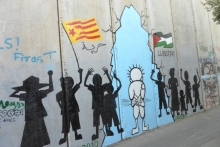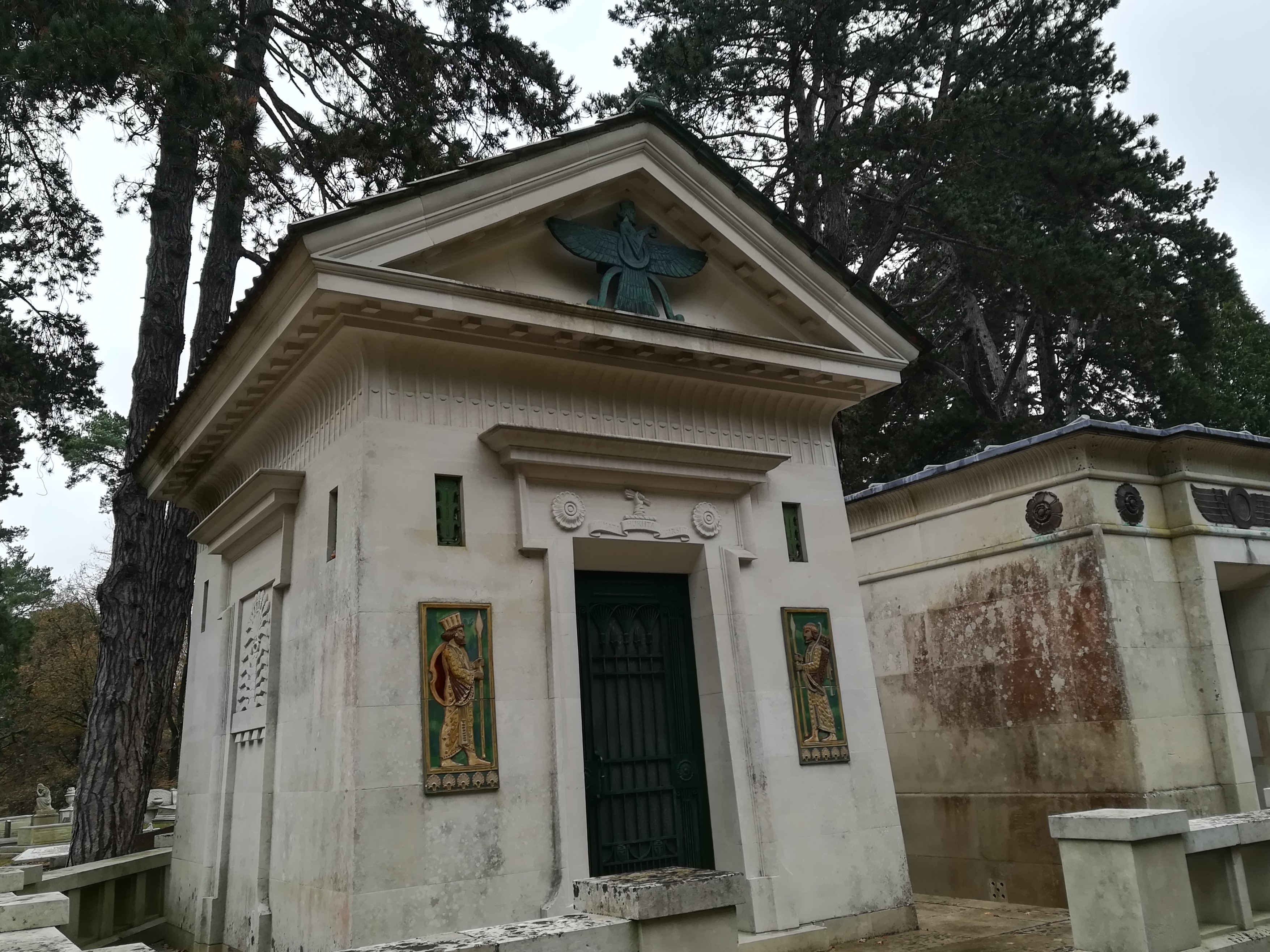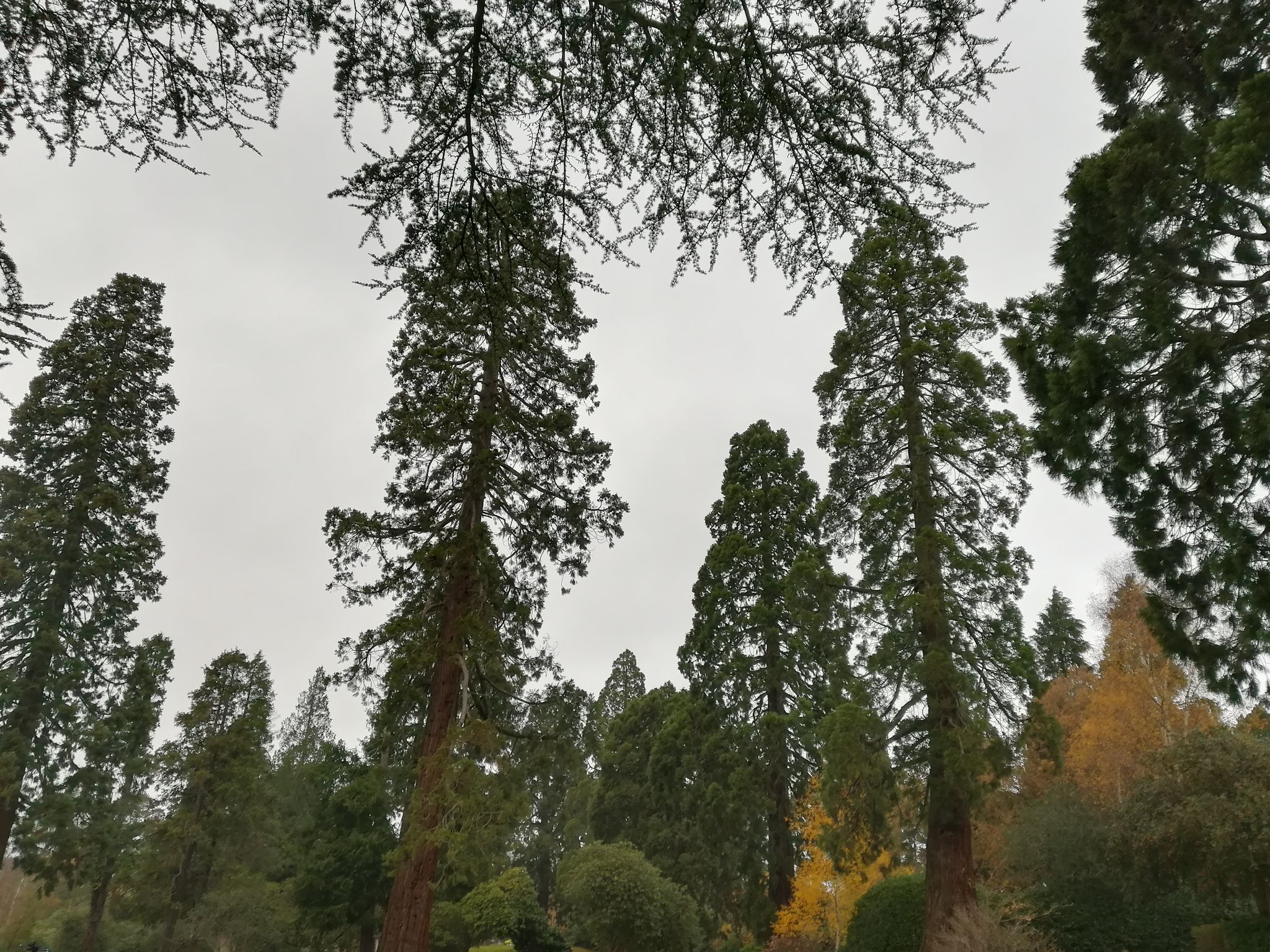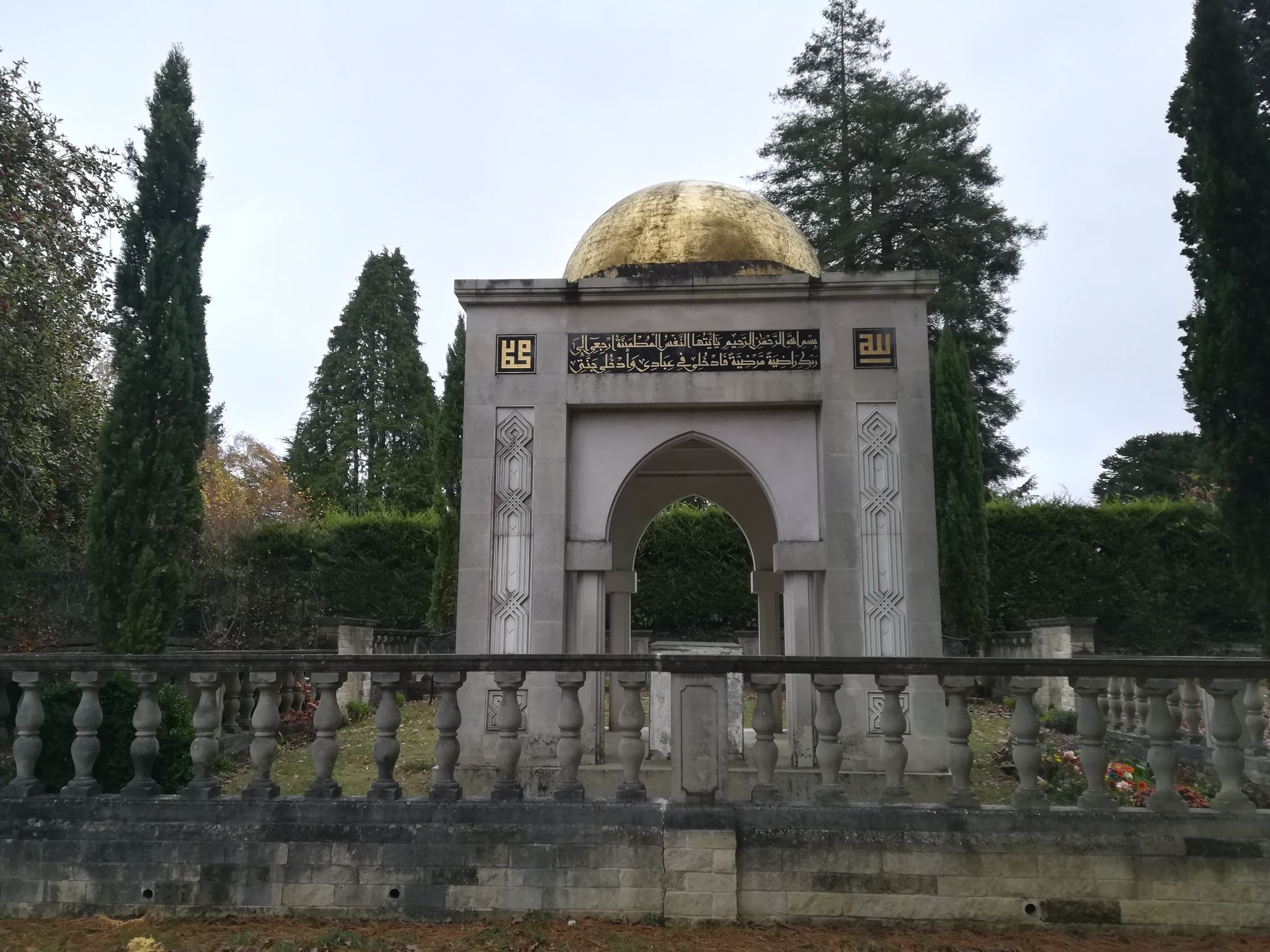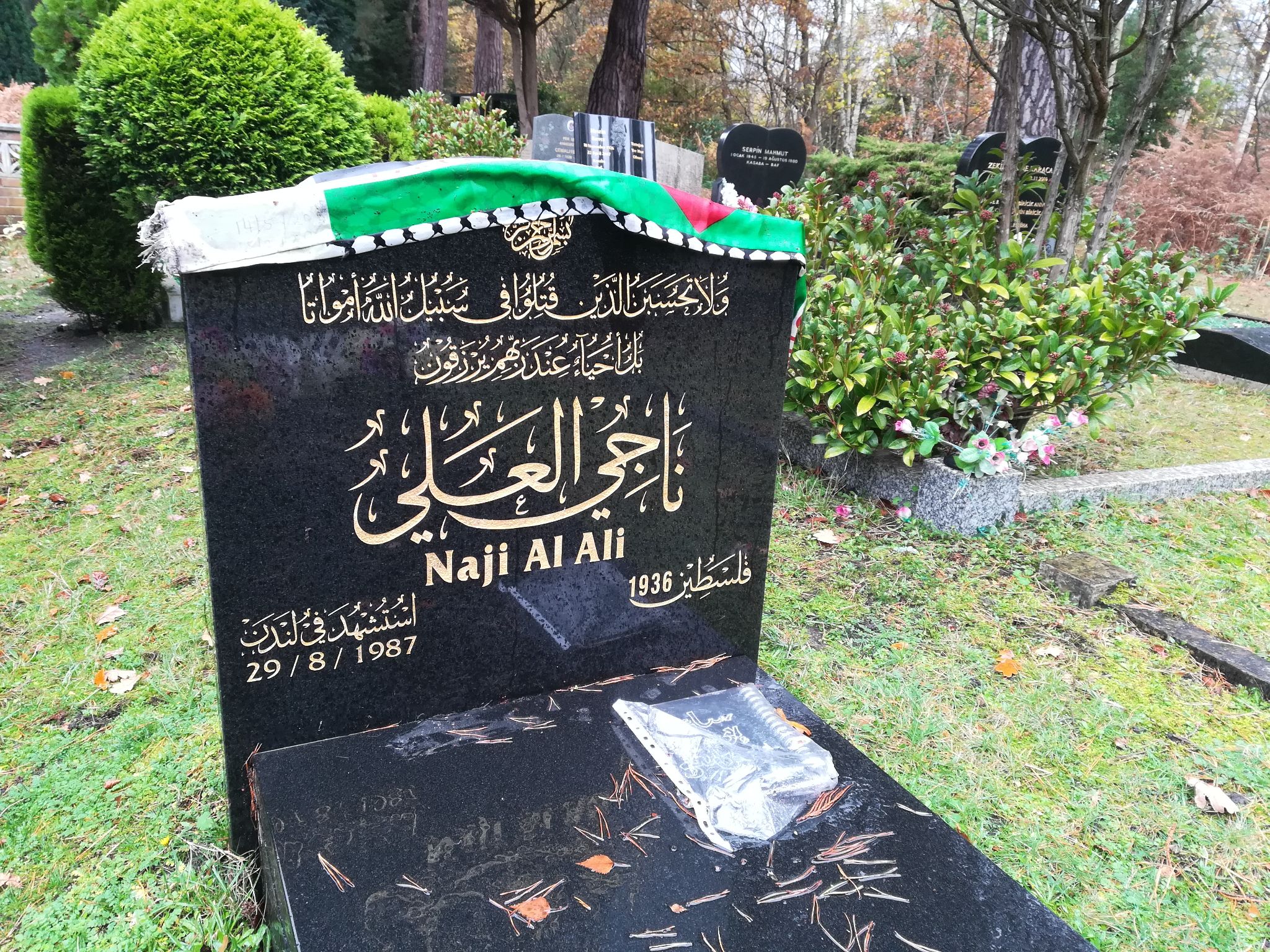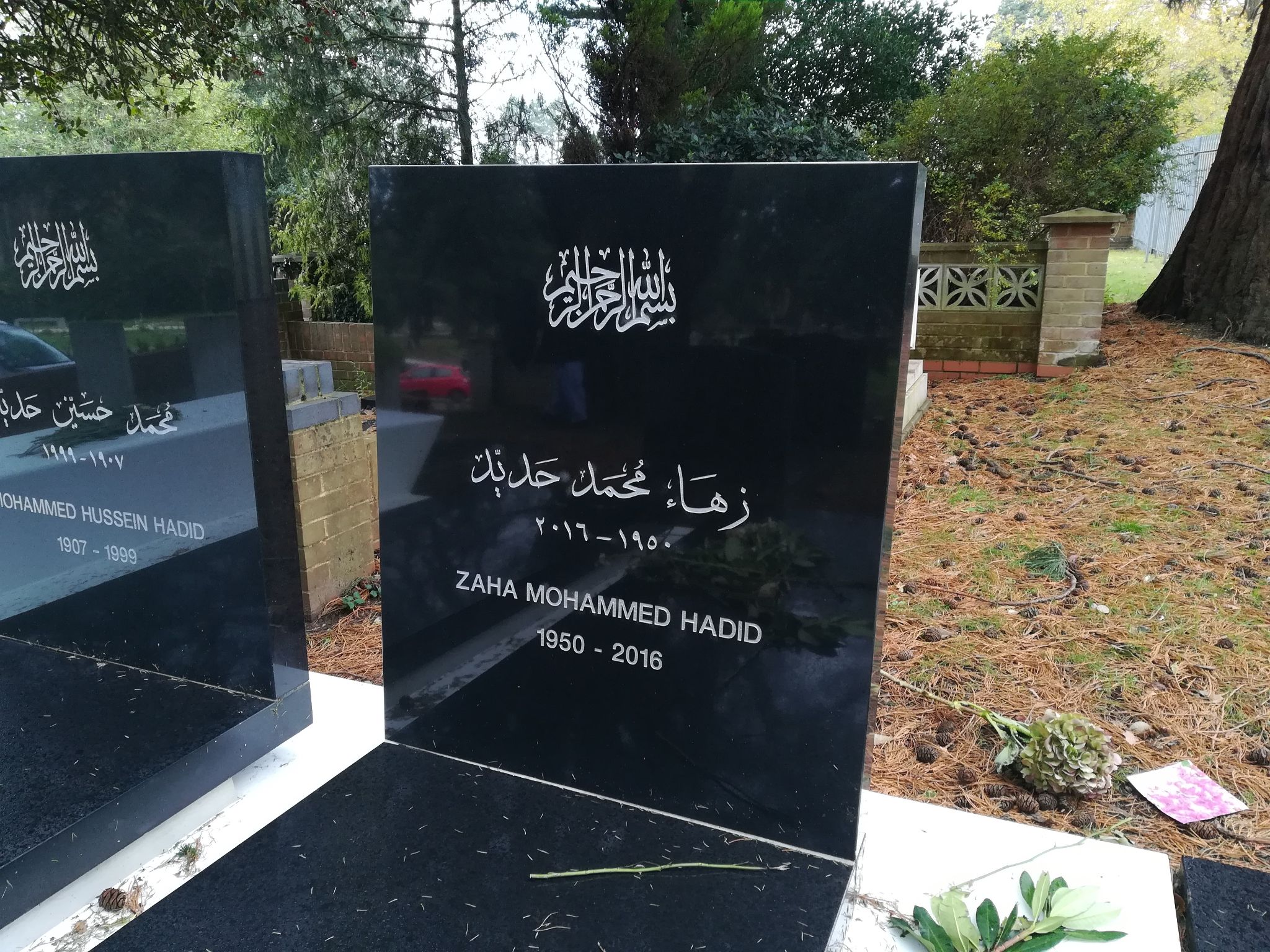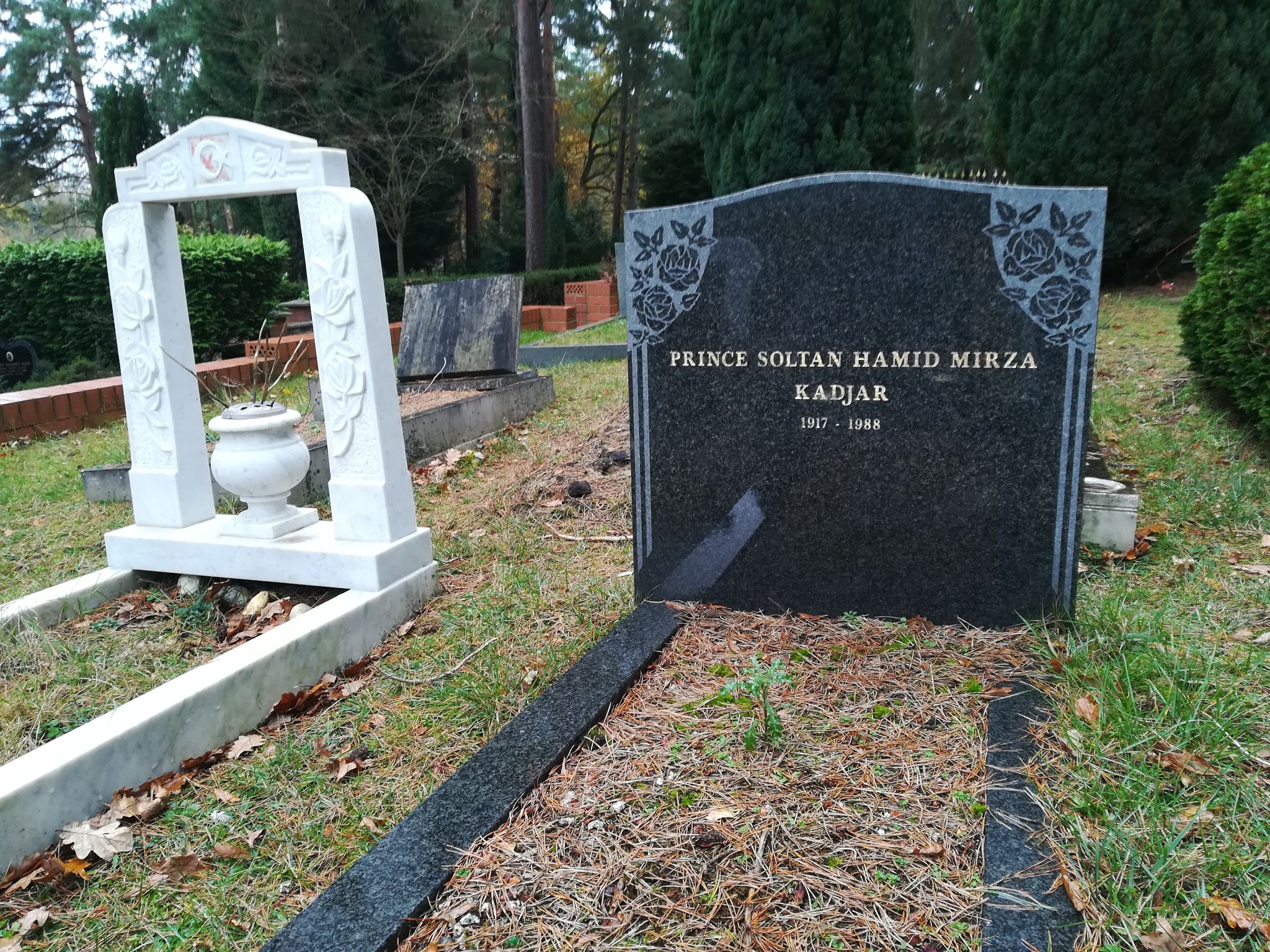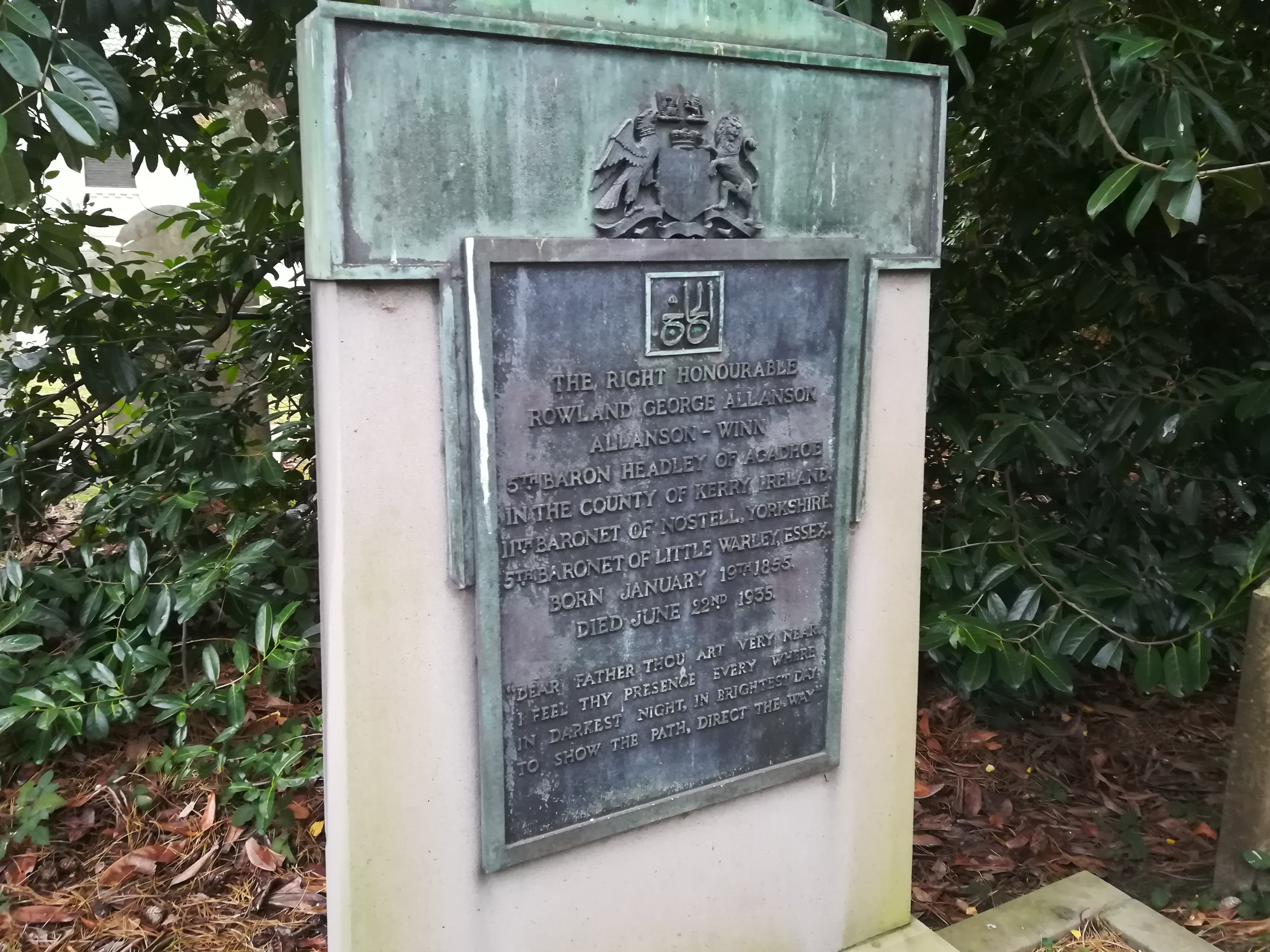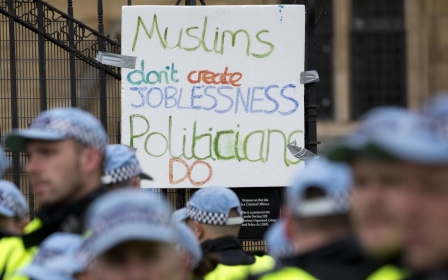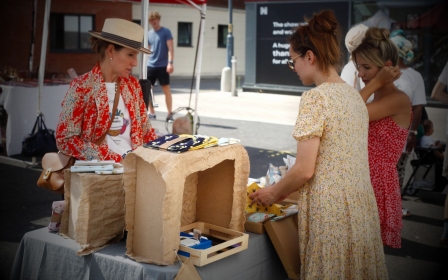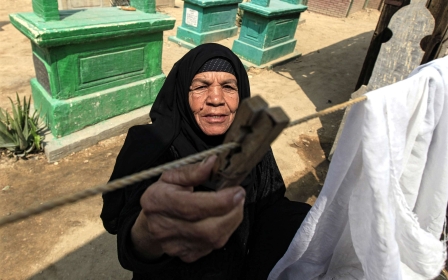The British cemetery home to Middle East poets, politicians and princes
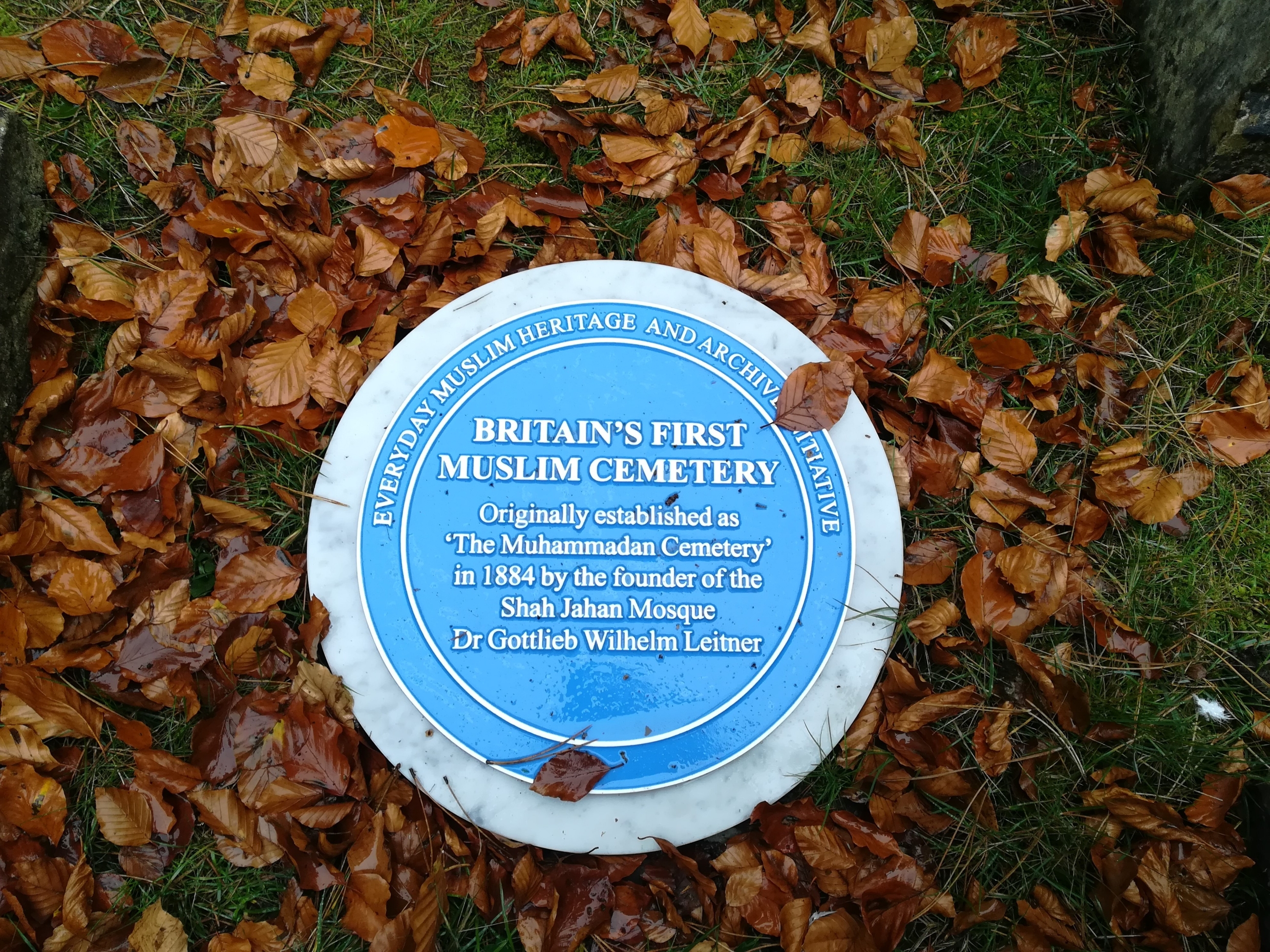
About 30km southwest of London, the commuter town of Woking happens to be home to western Europe's largest cemetery. Its size isn't its only accolade; Brookwood cemetery has also been the resting place of some of the world's prominent thinkers, creators, activists and royalty.
They include Edward the Martyr, who briefly ruled the country in the 10th century and whose remains were moved to Brookwood in 1984; John Singer Sargent, the American portrait artist who painted several US presidents; and, for a time, Dodi El-Fayed, the entrepreneur who died in a car crash alongside Princess Diana.
Its grandeur is clear on arrival, as imposing 60-metre tall giant redwood trees greet visitors to the near 90-hectare area of land, the Californian native species seeming as much at home in their splendour as the remains of the international personalities that lie beneath them.
In springtime, purple and fuchsia rhododendrons add colour to the mature evergreen landscape, while, year round, an alpine scent from pine trees carries through the air.
New MEE newsletter: Jerusalem Dispatch
Sign up to get the latest insights and analysis on Israel-Palestine, alongside Turkey Unpacked and other MEE newsletters
Middle Eastern rulers who once held court in their homelands, like Muhammad Al-Badr (1929-1996), the last monarch of the Mutawakkilite Kingdom of Yemen (North Yemen) have their last resting place here. Sultan Said Bin Taimur of Oman (1910-1972) was buried here upon his death, but was later returned to Oman (date unknown). Both leaders fled their lands following coups, seeking exile in Britain.
Sufi scholars and brothers Idries and Omar Ali Shah also lie at rest in the tranquil gardens, as do other writers, including the Iraqi colonial poet known by her nom de guerre Um Nizar al-Malaika, the mother of the more recognised Nazik Sadiq Al-Malaika.
Beneath one of the large trees, buried between her father and her brother, lies award winning British-Iraqi architect Zaha Hadid, her gravestone surrounded by scattered pine needles and cones. Further along, also in the cemetery's Muslim burial ground, Naji al-Ali and Mahmoud Kahil, political cartoonists from neighbouring countries (Palestine and Lebanon) and contemporaries in their profession, now lie metres apart.
These are just some of the 46 notable people highlighted on the Muslim Cemetery Walk devised by award-winning author, travel writer and heritage expert Tharik Hussain.
"The first time I visited it, I felt excited and overwhelmed as I began to realise the richness of the history there and its significance. I also felt a tad emotional to come upon the final resting places of people I had read about and studied the works of - like Muhammad Marmaduke Pickthall and Yusuf Ali," Hussain told Middle East Eye.
"I knew straight away I wanted others to have access to it as well, so they too could appreciate the richness of Britain's Muslim heritage."
Victorian cemetery
The cemetery, established in what was once countryside under Queen Victoria's rule at a time when the funerary industry was big business, was built in 1849 as a way to keep dead (and decomposing) bodies out of London.
It is now home to more than 250,000 bodies of those who professed a faith or none at all, including a large section for the Zoroastrian faith, believed to be its only official burial ground in Europe. Other plots are dedicated burial spaces for Jewish, Christian, Buddhist, Ahmadiyah, and Bahai faith groups.
The Muslim section, once known as the Muhammadan Cemetery, was established in 1884 by a Hungarian Jewish academic with an interest in eastern culture - Dr Gottlieb Wilhelm Leitner. Born in Lahore in 1840, he later lived in Istanbul learning Arabic, Turkish and studying Islam before becoming professor of Arabic and Muslim law at King's College London.
Although he "masqueraded as a Muslim," said Hussain, using the alias Abdu'r Rasheed Sayyah, "there is no evidence he actually professed Islam as a faith".
He also founded the now defunct Oriental Institute in Woking - a precursor to London's SOAS University - where world religions and cultures could be studied. He wanted to build free places of worship at the institute, including a Hindu temple, a church, a synagogue and a mosque. The Shah Jahan Mosque and St Paul's Church, built opposite each other about 7km east of the cemetery, were as far as he got before his death in 1899. Leitner is now buried at Brookwood and his is the first grave featured on Hussain's trail.
"Leitner is the first because there would be no Muslim cemetery in Brookwood or mosque in Woking without him," Hussain said.
The first-known Muslim burial at the cemetery was in 1895, according to John Clarke, a historian whose book on Brookwood went into its third edition last year. The burial was of Sheikh Nubie, an Indian Muslim juggler who came to England to perform at Queen Victoria's Empire of India Exhibition at Earl's Court, but died of pneumonia on his way to meet the queen at Windsor Castle.
Unfortunately, the location of Sheikh Nubie's grave is no longer known, but other legendary personalities of Muslim origin, with a lifetime of stories, have been mapped by Hussain and are now available for visitors to trace.
Hussain created the walk in collaboration with the EveryDay Muslim Heritage and Archive Initiative, to pay tribute to the forgotten Muslim great and good, and also to chart Islam's relationship with Britain.
His project of discovery took 18 months. Along with a small team of academics, local residents, and historians, Hussain began to discover and document a list of "notable burials". Finding them proved a challenge, given the size of the cemetery and with tombstone wording often eroded with age and British weather.
"Most of the time it was old-fashioned plodding around for days on end on my own," said Hussain.
Alternative walking space
Cemetery walks during the pandemic seem to be growing in popularity, offering an alternative open space for those wishing to take their outdoor exercise. All 1,000 of his free printed trail maps, which were left for visitors at various points of interest, were quickly taken, and the online map has been downloaded more than 400 times from the EveryDay Muslim website and shared countless times over social media.
Hussain's self-guided trail is easy to follow and allows curious historians to learn more about Britain's first flourishing Muslim community - including two convert British barons, Lord Headley and Sir Archibald Hamilton; other members of Middle Eastern royalty include the last prince and heir of the Qajar dynasty of Iran and the last known Ottoman princess, Khadija Hayriya Aisha Durr-i-Shahvar Sultana.
Woking Council, the cemetery owner, has since planned to introduce other themed trails through the graveyard as part of its long-term development plan, including ones to mark LGBT History Month, Black History Month, and International Women's Day.
"I wanted to do something to stop [Muslim heritage] remaining hidden and ignored because if it did I felt it would also remain excluded from Britain's 'authorised' and popular religious and cultural narratives," said Hussain, adding that if European Muslims and non-Muslims felt "notions of belonging and identity," people would have a different perception of the "role of Islam and Muslims within the European cultural landscape".
And so the heritage trails were born: one is through the cemetery and the other to points of historical significance to Britains' early Muslim community. MEE has put together a list of eight notable burial spots to look out for on the trails.
1. Naji Salim Hussain al-Ali (1937-1987)
Naji al-Ali is probably best known for creating the cartoon character Handala, a 10-year old boy who turns his back to the world while observing the atrocities around him and said to symbolise the world turning its back on Palestine.
Born in northern Palestine in 1937 before the creation of Israel, Ali later lived between Lebanon and Kuwait. His political cartoons were published in Lebanese papers Al-Safir and Al-Siyasa, and al-Qabas, a Kuwaiti newspaper. Through them he would draw attention to the problems of Palestine and the Middle East.
Often critical of both the Palestinian leadership and the brutality of the Israeli army, he received more than 100 death threats over the years, according to the editor of a newspaper he worked for.
In 1987, he was shot in the neck outside al-Qabas's London office, and was later buried at Brookwood, although he had wanted to be interred beside his father in Ain al-Hilweh refugee camp in Lebanon, where he was raised.
His black marble grave lies between those of people mainly from the Turkish community on burial grounds used by the UK-Turkish Islamic Trust.
A Palestinian flag is draped across the tombstone, with a small notebook featuring the Handala character placed to one side, a reminder that Ali's legend lives on.
2. Dame Zaha Hadid (1950-2016)
Known for her "deconstructivist" architectural style, Zaha Hadid became the first female winner of the coveted Pritzker Architecture Prize.
Born in Baghdad to Mohammed Hussein Hadid, co-founder of Iraq's National Democratic Party, and Wajiha al-Subanji, an artist, Hadid studied in Beirut and London before building a name for herself with designs that include the Guangzhou Opera House in China, the London Olympics Aquatics Centre and the Heydar Aliyev Center in Baku, Azerbaijan.
She was appointed a dame in 2012, and in 2015 she was awarded the Royal Gold Medal from the Royal Institute of British Architects, the first time it had been given to a woman.
Hadid died in a Miami hospital from a heart attack while being treated for respiratory issues but had requested in her will to be buried between her father and brother at Brookwood.
At the time of her death, Hadid had 36 projects that were incomplete but have since been built by her architectural firm, including Qatar's Al Janoub stadium for the 2022 Football World Cup and the King Abdullah Petroleum Studies and Research Centre in Riyadh.
3. Princess Khadija Hayriya Aisha Durr-i-Shahvar Sultana (1914-2006)
Hayriya Aisha was the daughter of the last Ottoman caliph, also the heir apparent to the Ottoman throne, Abdulmecid II Efendi. She was educated in Turkey, and trained in martial arts, with a view to one day succeeding her father.
When the country became a republic in 1924, her family fled Turkey and sought exile in France, settling in Nice. It is here that, aged 17, she met and married her husband, Hymayat Ali Khan Azam Jah, Prince of Berar, son and heir to the Nizam of Hyderabad.
It is said that Azam Jah's father had been paying Efendi, her father, a monthly pension for his upkeep after he was dethroned, so when Hayriya Asisha's hand was asked for in marriage to the Nizam's son, Efendi could not refuse.
After her marriage in 1931, she moved to India with her new husband. She set up hospitals in the Purani Haveli area of Hyderabad that still run today.
The couple had two sons. One of them, Prince Mukarram Jah, went on to be the next Nizam of Hyderabad (in title), but relinquished his role to start a new life in the Australian outback as a sheep and cattle ranch owner.
Hayriya Aisha made a home for herself in Britain after both her sons completed their education there. She was buried at Brookwood after making it clear she did not wish to be buried in Turkey, as the Turkish government refused to bury her father when he died in 1944.
4. Muhammad Marmaduke William Pickthall (1875-1936)
Pickthall is probably best known among Muslims for writing an English translation of the Quran, called The Meaning of the Glorious Koran (1930), which became a popular text for those studying the holy book.
He was also a successful English novelist who had travelled to many countries in the Middle East, including Turkey, Egypt, Palestine and Syria, at a time when the Ottoman Empire was collapsing.
One biography states that, when aged 18, Pickthall "found a khoja to teach him more Arabic, and armed with a rapidly increasing fluency took ship for Jaffa, where, to the horror of European residents and missionaries, he donned native garb and disappeared into the depths of the Palestinian hinterland".
His travels inspired a great number of his novels, written over two decades and including Said the Fisherman, which received praise from his contemporaries.
When Pickthall sought to convert to Islam aged 19, during his time in Damascus, it is said the sheikh at the Ummayyad Mosque dissuaded him, reminding him it might upset his mother if he did so, and urging him to learn more about the faith before making such a decision. It took another 20 years before he decided to convert, in 1917.
Pickthall spent his later years in India, where he became the editor of the Bombay Chronicle.
He died in Cornwall in 1936, and Humayun Ansari, a professor of Islam and Cultural Diversity at Royal Holloway, University of London, suggests he chose Brookwood as his final resting place to ensure a "proper Muslim burial" and "to affirm publicly [his] religious affiliation and commitment to Islam for future generations of British Muslims".
5. Prince Soltan Hamid Mirza Kadjar (1918-1988)
Born in Tehran, but raised and educated in Turkey, Italy and France before settling in Britain, Hamid Mirza had been favoured by the British to be next in line as the Shah of Iran, but when they realised Mirza could not speak Farsi, they instead put Mohammed Reza Shah on the throne.
Mirza joined the British Royal Navy under the alias David Drummond, a name he said he chose while flipping through a telephone directory.
He went on to work in the oil industry, securing a job with Mobil, which by chance led him to return to Iran in 1971. It was his first time back since he left aged four.
In an interview given to Harvard University's Iranian Oral History project, Mirza talks candidly about his return to Iran, recalling being shocked by the levels of corruption. After a series of detentions by SAVAK (the Iranian intelligence service), he returned to the UK, where he lived with his second wife until his death.
6. HRH Princess Musbah Haidar, aka Musbah Khanum (1918-1977)
Princess Musbah Haidar was the second daughter of the Grand Sharif of Makkah, Amir Ali Haidar, and his Irish wife, Isabel Dunn.
Dunn had been employed as an English teacher for Amir Ali Haidar's children from his first marriage. Musbah and her older sister and brother were all born and raised in Istanbul, where the family had a second home.
Tharik Hussain personally rediscovered Haidar's grave in the older part of the Muhammadan Cemetery, after coming across Arabesque: an account of Harem Life (1944), a book she wrote documenting her life as a Meccan princess.
One reviewer wrote, "Arabesque provides an insider's view of life in the final years before foundation of the Turkish republic. Her mother, Isobel Duncan, was the daughter of a British general serving as an advisor to the Ottoman Army, and her father served in various administrative posts in Istanbul, Syria, Medina, and Beirut."
Hussain spent months at the cemetery walking from one grave to the next to find her final resting place.
He said: "I was very excited and then quite nervous. I couldn't believe that an actual descendant of the Prophet could have a British connection and be buried here in England. But also that no one had ever mentioned her before."
On the collapse of the Ottoman Empire in 1924, Haidar moved with her family to Britain, where she met and married her husband, Major Francis Stewart Fripp, who later converted to Islam, taking the name Ghalib. They are buried next to each other in the same plot.
7. Ramadan Guney (1932-2006)
Guney was a Cypriot Politician, founder of the first Turkish mosque in the UK and a former owner of Brookwood Cemetery.
He was born in Cyprus in 1932 and as a young man, served in the British army and police on the island.
He immigrated with his family to Britain in 1958 and there he established a reputation for hard work, strong personal ethos, and business acumen.Guney set up the first Turkish record shop in north London’s Green Lanes area, and as chairman of the UK Turkish Islamic Trust, also established the first Turkish Mosque in the country.
It was this role that first took him to Brookwood.
“He wanted to find a dedicated burial space for members of the Turkish community," says his daughter Gonul Guney.
"As a kid I remember he went out to look at a plot at Brookwood cemetery, and came home to tell us, 'I’ve just bought a cemetery'. We thought he meant the plot, but he had bought the whole of Brookwood."
It was under his ownership from 1985 to 2006 that a large scale cemetery maintenance programme began.
John Clarke, a historian of the cemetery, writes: “It included the restoration of the Muslim and Catholic sections… whilst working on key areas of the wider cemetery as funding and staffing permitted. He also digitised the burial records."
Guney died at the age of 74 from a heart attack while on a visit to Cyprus. His body was returned to Brookwood where it lies beside his wife of 52 years, Suheyla Guney, in a private mausoleum.
8. Sir Rowland George Allanson-Winn, 5th Baron Headley (1855-1935)
Also known as Al-Hajj Sheikh Saifurrahman Rahmatullah el-Farooq.
Al-Hajj, the title given to someone who performs the Hajj pilgrimage to Mecca, is written in decorative Arabic text at the top of Lord Headley's tombstone, just beneath his coat of arms.
He made the holy pilgrimage in 1923 becoming reportedly the first British peer to perform the Hajj, 10 years after he "made international headlines... when he defied convention by publicly converting to Islam" in 1913.
On his conversion he said: "It is possible that some of my friends may imagine that I have been influenced by Mohammedans; but it is not the case, for my convictions are solely the outcome of many years of thought."
Headley went on to become president of the British Muslim Society and co-founder of the Woking Muslim Mission at the Shah Jahan Mosque.
Muslims from "middle to upper‐class backgrounds (especially those who had converted) would have wanted to be buried in a place [Brookwood]", states Humayun Ansari's research paper documenting Muslim burials in the UK (2007). "[It] was not only commensurate with their social status, but pleasantly harmonised their death with nature and wider British culture, while also underlining their religious identities".
It's this strong and historic relationship that shows "Islam in Britain is not a new or alien tradition, but one that is ingrained in the country's cultural landscape," Hussain said.
Britain's relationship with Islam dates back to Islamic-inspired coinage created by King Offa of Mercia all the way back in 8th century England, Hussain reminds us.
"It's important to normalise this ignored and hidden history, to make it part of Britain's accepted historic narrative so it is no longer seen as something separate. So that Muslims and non-Muslim Brits all see it as part of their heritage."
Middle East Eye delivers independent and unrivalled coverage and analysis of the Middle East, North Africa and beyond. To learn more about republishing this content and the associated fees, please fill out this form. More about MEE can be found here.



